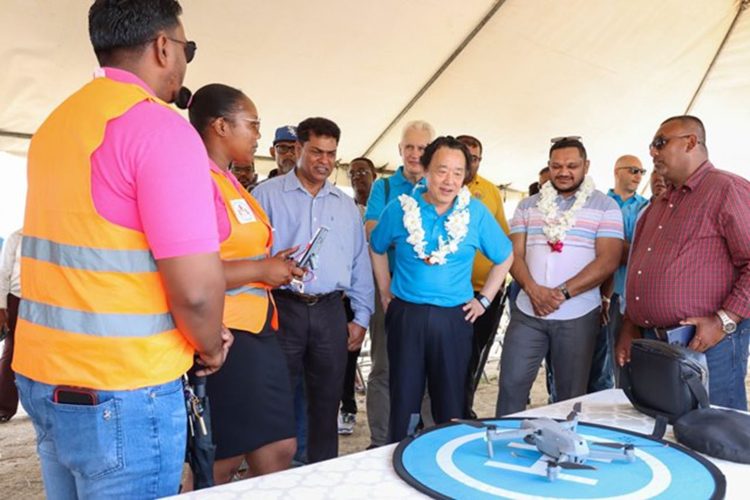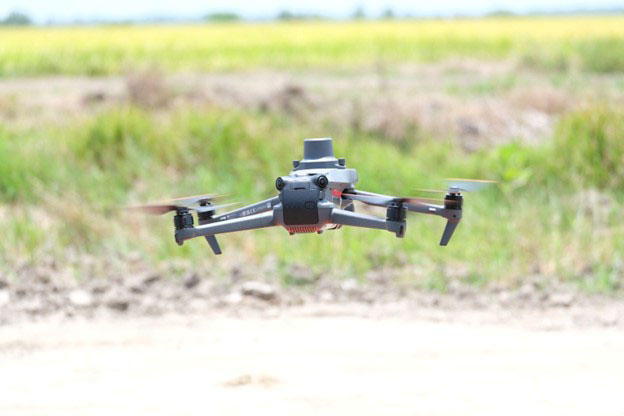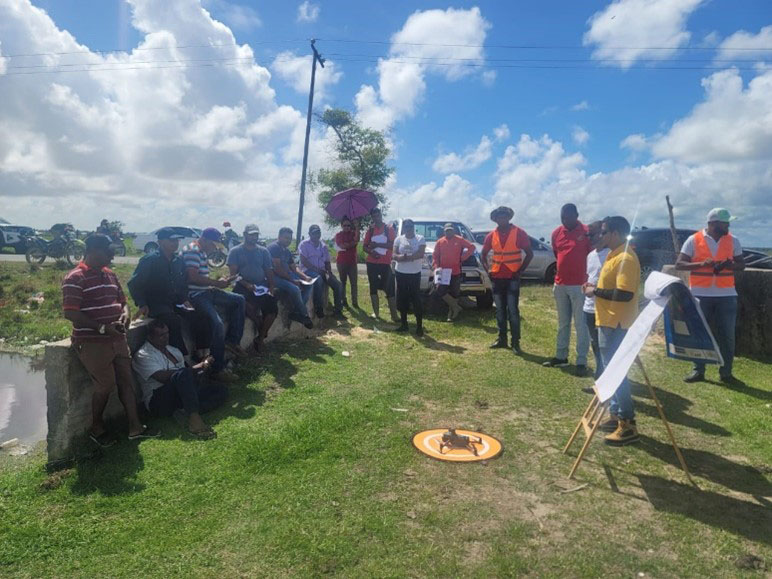The Guyana Rice Development Board (GRDB) has been spearheading the use of drones in the agricultural sector since 2021, revolutionizing crop management for farmers.
In an interview with the Sunday Stabroek, Badrie Persaud, General Manager and Dahasrat Narine, Regional Superintendent Region 3 and Project Coordinator of the GRDB explained how these drones are transforming agriculture by aiding in field monitoring and decision-making based on data. The initiative initially piloted in three regions – Region three, Region six, and Region two – with plans to train more farmers in drone usage.
Extensive training has been provided to the GRDB team, covering various aspects of drone operations and data analysis. Modules comprised Training on UAS Operations and Mapping Theory – Module 4, UAS Operations and Mapping Practical – Module 4.2, and UAS Geospatial Analysis and Participatory Mapping, Satellite Imagery for Crop monitoring and Introduction to Cartography and Flight planning for early season data capture in rice and basic data analysis using QGIS.


Dahasrat highlighted the importance of certified pilots and data analysts in maximizing the benefits of drone technology. Training has also been provided to the farmers who will be using these drones in an effort to increase productivity.
Persaud, the General Manager of GRDB, identified the labour shortage as a major challenge for rice farmers, exacerbated by migration to other sectors offering higher wages. However, drone technology offers a solution by reducing the reliance on labor-intensive farming methods.
Drones play a crucial role in increasing productivity and efficiency in rice farming. They can cover large areas quickly, allowing for timely crop monitoring and management. Additionally, drones help identify crop stress, detect diseases, and optimize irrigation and pesticide application.
Dahasrat emphasized the importance of technological advancements in agriculture, including specialized tractors from Brazil and China, which are increasingly being adopted by farmers in Guyana. These tractors offer efficient sowing, seed broadcasting, and agrochemical application, mitigating the impact of labour shortages.
Under the China South-South Cooperation Programme, the Food and Agriculture Organization of the United Nations (FAO) is supporting the Guyana Rice Development Board’s efforts to advance technology in the rice industry.
Overall, technological development, particularly the use of drones and specialized tractors, is revolutionizing rice farming in Guyana, ensuring higher productivity and sustainability in the face of labour challenges.









